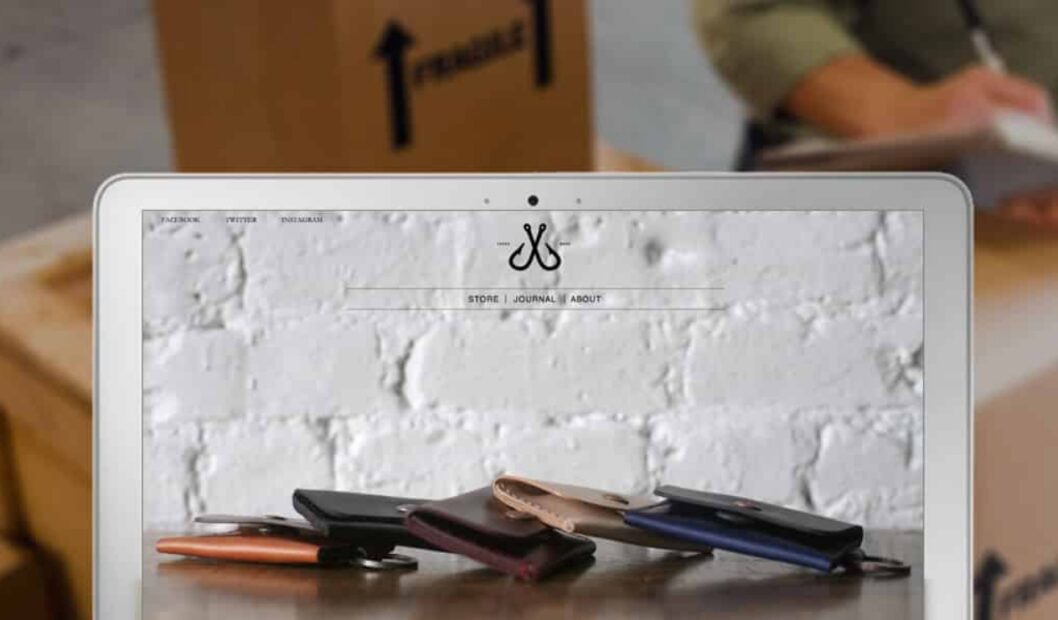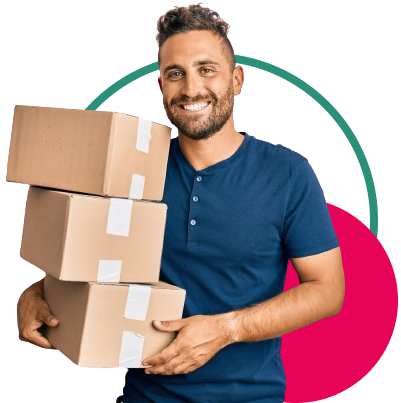Eric Heins is the founder of Corter Leather and Cloth. After raising over $58,000 on Kickstarter for his Bottlehook Bottle Opener, he has built a successful leather goods company that has been featured in the pages of Real Simple, GQ, and Esquire Magazine amongst other print and online publications.
Having started the company in college and still in his 20s, entrepreneur and leather smith Eric Heins is a great example of how the American dream lives on and how it can be accessed through a new method – crowdfunding.
We had the chance to sit down with Heins, a Fulfillrite customer, who shed some light on what it takes to launch a successful Kickstarter campaign.
How did you come up with the idea for Corter Leather?
Eric Heins: I’m a leather smith and in college I started making wallets in my dorm room because I couldn’t afford to buy one. I put pictures of the wallet online and a bunch of other kids wanted one, too. Corter Leather was slowly born. I continued the business after graduating in 2009 with a degree in graphic design and at that time switched to doing one-off custom work.
Why did you decide to crowd-fund the launch of your bottle opener?
[In 2012], I injured my hand and was in an air cast for six weeks. I couldn’t work and I had the idea for a hook with a bottle opener. That’s pretty much it—I made a left-handed sketch, and thought ‘I have six weeks to kill.’ I only put it on Kickstarter for 17 days because I wanted to get it to market really quickly.
You raised more money on Kickstarter than anticipated. What was your reaction?
EH: I was excited. I was also kind of scared out of my mind because that was a lot [of volume] at that point. I had one other product, a leather guitar pick, that had done similarly in sales to the bottle opener –an overnight success type thing – and I could make the guitar pick, but we were hand-shipping 400 or 500 pieces at a time. To ship that product, I had to hire friends to address and package envelopes.
[With the bottle opener], I was more prepared. We raised a lot of money through the Kickstarter campaign, but it was only about 1,200 orders and I had shipped about 3,000 orders the year before with the guitar pick, just from my own business, so I knew I could do it. It was going to be a couple of months of really hard work but I was happy to do it because I was proud that the product was received the way it was. Plus, it’s a really simple product. [Besides the hook], there were only two other parts we needed: the leather tab which we made in-house and the O ring, which I worked with a metal smith in Montana. He got everything made super-fast. We delivered on time and there were no real hang-ups.
Following the Kickstarter campaign, how long did it take to scale Corter Leather to meet needs of another high demand product?
EH: It didn’t take that long actually. We had a 100,000-piece mold made so our fabricator could make as many bottlehooks as we needed. That was in July of 2012. Fulfillrite had contacted me to use its fulfillment services. Once I had Fulfillrite established as my order fulfillment partner, I knew I could produce as much product as I could sell.
Fulfillment was about 80 percent of my job before. [With Fulfillrite], I had 80 percent of my time free to make more products. It was liberating because now I had time to do what I wanted to do and I didn’t have to do as much housekeeping. We shut down the website after Christmas in 2012 and I redesigned it. In March 2013 we launched the new website with new products. I hired my first full-time employee in April of this year, so I was still doing it myself for another 18 months after the re-launch.
The challenging part came after that, when I had to scale the entire company, because I just didn’t have the experience. I was 25 years old, a couple of years out of college and with no business degree. I did a lot of my own research on how ecommerce can be optimized. We’re in a unique position because we’re not selling a digital product. We manufacture our products as we’re selling them, which is kind of rare these days. A lot of the challenges were with balancing workload.
Can you give an example?
EH: I realized after the fact that I did a lot of stuff right. I was lucky to have already set up my brand. What you don’t realize with Kickstarter is that if you make it to a top position [on the home page], it’s not the press you get that takes over your sales but rather it’s the organic traffic from Kickstarter. I had my website set up, so I had a place for that traffic to go. But if I had a brand new product—no website, no brand, no anything—I could have easily become that one thing that someone found on Kickstarter and now can’t find.
It’s very important to have a place to send traffic, even if it’s just a Facebook page or an Instagram account. The most valuable aspect of Kickstarter wasn’t necessarily the funding—it was the exposure. It brought us out of our niche.
How did your use of social media factor in?
EH: That’s how the campaign gained traction. We were mentioned in blogs and I showed our design and fabrication process on our social media accounts. I posted pictures of the sketches and pictures of the prototypes so people knew that a new product was coming. In some instances, a company with no presence can put up a product and people will find it. But if you’re trying to fund a designed line and you don’t have a presence, you have to tell people about it. They’re not just going to go to Kickstarter and find it.
So it’s about building up a brand.
EH: Don’t look at what you’re doing as launching one product. You’re launching [your brand] to the world. It’s like meeting someone and not having a business card on you—you can say that you’ll give the card to them the next time you see them, because it’s going to be a lot harder to find each other. You have to have the bare-bones structure of whatever you’re launching and make it available for people to at least bookmark.
How did you get your post-Kickstarter customers?
EH: After the Kickstarter, we immediately put the bottle opener up for sale and put the link to the website on the Kickstarter page. But as far as the company was concerned, we kept going where we left off. My hand healed, and I started making my wallets again.
A lot of people from Kickstarter actually had no idea that I was a leather smith until they went to Corter Leather’s website. I put the money from Kickstarter back into the business to make new metal pieces to expand the line. The funding allowed me to take more steps [with the business] and to make cooler stuff.
I design all my products and I use their popularity as a barometer of sorts. If a product doesn’t sell, that means it’s not good enough. So, I take it off the market, re-design it, and put it back in my line.
I don’t want to be white noise. I want to make things that people need and that aren’t readily available. I don’t email bloggers, I don’t do any of that stuff. Over the years, I’ve gotten enough press that people follow me, which is the way I want my business to be run.
What’s next?
We’re moving into some bigger pieces now, including full-sized and snap wallets. I’m also launching another company called The Albatross Brand, which is machine-sewn leather. It’s going to be a truly direct-to-consumer wholesale leather goods company.
We’re not saying, ‘Our competitors offer them for $100 and we make ours for $60.’ We’re saying, ‘We make this wallet for $19 and sell it to you for $38.
Is there a meaning behind your new brand name, The Albatross Brand?
Yes. In Samuel Taylor Coleridge’s The Rime of the Ancient Mariner, the albatross was an ode of good fortune to anyone that embraced it and fed it and let it sit on its ship, and it was an omen of bad luck for those who tried to kill it. So that’s pretty much what we’re trying to do: To bring really good, high-quality products to kids that might not be able to afford the handmade stuff and, for anyone that tries to kill us, we’re going to try to bring them down. That’s the whole mantra behind it.
You’re launching The Albatross Brand on Kickstarter. Why are you returning to crowdfunding?
Because it’s a totally different entity. Corter is growing so fast that it has capital and I don’t want to take capital away from the business to put into another one. That’s the number one reason. The number two, and most important reason, is one of the things that I like the most about Kickstarter. I don’t want to spend time on something that people don’t want. When you put a product on Kickstarter and you tell people about it, they have the ability to say yes, I think this should exist, or no, I don’t think this should exist.
Corter Leather started in a dorm room and is now expanding into new product lines after having raised over $58K on their initial Kickstarter campaign. Every item they sell is handmade, down to the last stitch, and the company is completely solar powered.
To read more about what it’s like to launch and run a successful crowdfunding campaign, be sure to check out the rest of interviews in this series LINK.
Yes. In Samuel Taylor Coleridge’s The Rime of the Ancient Mariner, the albatross was an ode of good fortune to anyone that embraced it and fed it and let it sit on its ship, and it was an omen of bad luck for those who tried to kill it. So that’s pretty much what we’re trying to do: To bring really good, high-quality products to kids that might not be able to afford the handmade stuff and, for anyone that tries to kill us, we’re going to try to bring them down. That’s the whole mantra behind it.

